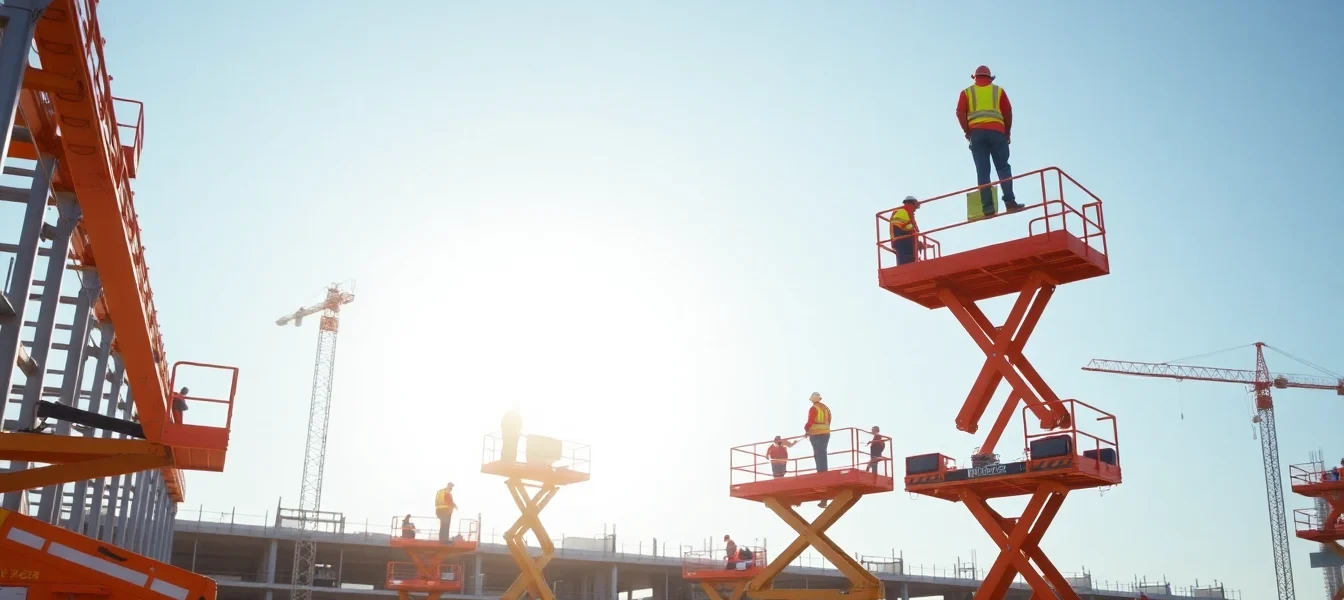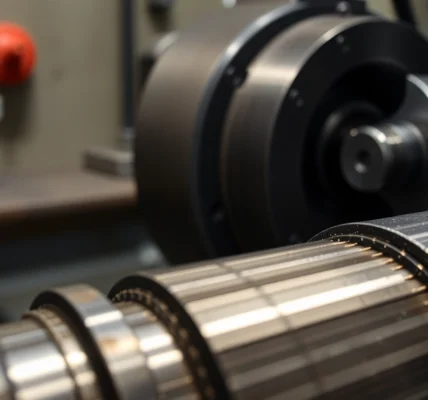Reliable Aerial Work Platforms Rental Solutions for Safe and Efficient Projects
Understanding Aerial Work Platforms and Their Rental Benefits
In today’s construction, maintenance, and industrial sectors, the need for safe, efficient, and versatile access to elevated work areas is paramount. Aerial work platforms (AWPs) have become indispensable tools for professionals tasked with tasks that involve reaching heights safely and effectively. Whether it’s for building repairs, electrical installations, painting, or cleaning, the right aerial platform can significantly improve productivity and safety standards. For organizations and contractors seeking flexibility and economic advantages, aerial work platforms rental offers an optimal solution. This approach not only reduces upfront capital costs but also ensures access to the latest equipment equipped with modern safety features.
Types of Aerial Work Platforms Suitable for Rental
The rental market offers a diverse array of aerial work platforms tailored to various project requirements. Understanding the types available is key to selecting the correct equipment. The primary categories include:
- Scissor Lifts: These platforms provide vertical lifting capabilities with a large work platform for multiple workers or equipment. Ideal for indoor applications and tasks requiring a stable, confined footprint.
- Boom Lifts (Articulating and Telescopic): These versatile lifts extend horizontally and vertically, allowing access over obstacles and complex areas. Articulating boom lifts are perfect for reaching around obstacles, while telescopic booms excel at long, straight outreach.
- Vertical Mast Lifts: Compact and lightweight, these lifts are suitable for indoor tasks at moderate heights, offering quick upward movement with less maneuverability.
- Spider and Crawler Lifts: Designed for uneven terrains or confined spaces, these machines combine mobility with stability for complex applications.
- Trailer-Mounted and Vehicle-Mounted Platforms: For mobile applications, these platform types are mounted on vehicles, providing rapid deployment and repositioning.
The availability of these options through rental companies allows project managers to select precisely the right equipment for their job, optimizing safety and efficiency.
Key Advantages of Renting Aerial Platforms Over Purchasing
Opting for rental of aerial work platforms presents numerous strategic and financial benefits. These advantages include:
- Cost Efficiency: Rental eliminates large capital expenditures. Instead, costs are shifted to a predictable operational expense, improving cash flow management.
- Access to Latest Technology: Rental providers regularly update their fleets with newer, more reliable, and safer equipment, ensuring compliance with evolving safety standards.
- Maintenance and Safety: Reputable rental companies handle routine maintenance, inspections, and safety checks, ensuring the equipment’s optimal condition and reducing liability.
- Flexibility and Scalability: Rentals allow projects to adapt quickly to changing scope or timelines, with no long-term commitment.
- Reduced Storage and Disposal Concerns: Renting means there’s no need to maintain storage facilities or deal with resale and disposal issues once the project concludes.
These benefits collectively make rental a strategic choice, especially for short-term or variable projects where capital investment is less justified.
Ensuring Safety and Maintenance Standards Through Rental Services
Safety is the foremost priority when operating aerial work platforms. Leading rental providers uphold strict safety and maintenance standards, often exceeding regulatory requirements. This commitment encompasses:
- Regular Inspections: Equipment undergoes routine safety inspections, daily pre-operation checks, and certifications to identify wear and prevent malfunctions.
- Maintenance Programs: Proven maintenance schedules ensure all machinery operates smoothly, reducing downtime and safety risks.
- Operator Training Support: Rental companies frequently offer or recommend specialized training for operators, ensuring correct use and adherence to safety protocols.
- Compliance and Certification: Equipment adheres to UK safety standards, including LOLER (Lifting Operations and Lifting Equipment Regulations), and is supplied with relevant documentation.
- Emergency Support: Reliable rental providers offer prompt assistance and replacement services if equipment malfunctions or safety issues arise.
Partnering with reputable rental organizations ensures that safety is integrated at every step, minimizing accidents and legal liabilities.
Choosing the Right Aerial Work Platform for Your Project
Assessing Project Height and Reach Requirements
The foundational step in selecting an aerial platform involves accurately determining the heights and reach distances necessary for your project. This includes:
- Measuring the maximum working height required, including allowances for equipment and operator position.
- Evaluating horizontal reach needed to access specific areas without repositioning the equipment excessively.
- Considering the working surface conditions to ensure stability and suitability of the chosen platform.
For example, a task requiring access to a 15-meter-high building façade might necessitate a telescopic boom lift with a reach beyond that height, while interior ceiling repairs might be best suited for a scissor lift with a shorter elevation.
Matching Equipment Types to Specific Tasks
Different tasks demand specific types of aerial work platforms. Precise matching enhances safety, efficiency, and cost-effectiveness:
- Concrete and Maintenance Work: Scissor lifts provide stable, large platforms suitable for multiple workers and tools.
- Complex Architectural Access: Articulating boom lifts navigate around obstacles, making them ideal for intricate repairs and installations.
- Indoor Projects: Electric-powered vertical mast lifts and narrow scissor lifts minimize emissions and fit tight spaces.
- Outdoor and Rough Terrain: Crawler or rough-terrain boom lifts with stabilizers are suited for uneven surfaces and exterior construction sites.
Tips for Selecting Reliable Rental Providers with Strong Safety Records
The choice of rental partner can significantly impact project safety and success. Consider:
- Reputation for safety and adherence to standards, verified through client reviews and industry certifications.
- Provision of comprehensive equipment maintenance and calibration records.
- Availability of operator training and technical support services.
- Clear rental agreements detailing responsibilities, safety procedures, and liabilities.
- Responsive customer service and emergency support capabilities.
Engaging with well-established providers like Rentmas ensures access to reliable equipment and expert guidance.
Optimizing Rental Processes for Seamless Equipment Access
Booking Procedures and Advance Planning
To maximize efficiency, initiate rentals well in advance, especially during peak seasons or for large-scale projects. Key steps include:
- Assessing project timelines and aligning rental periods accordingly.
- Communicating detailed equipment needs to rental providers to ensure availability.
- Confirming delivery, setup, and pickup arrangements to avoid delays.
Understanding Rental Costs and Additional Charges
Transparency in costs prevents unforeseen expenses. Typical rental charges include daily or weekly rates, with additional fees possible for:
- Extended rental periods beyond initial agreements.
- Transport or delivery fees.
- Operator costs if included or hired separately.
- Usage-based charges, such as engine hours or platform lift height.
Clarify all costs upfront by requesting detailed quotes and reviewing rental agreements carefully.
Coordination with Rental Companies for Delivery and Setup
Effective coordination ensures the equipment arrives on time and is installed safely. Important considerations include:
- Providing accurate site access information to facilitate delivery.
- Agreeing on designated setup areas that ensure stability and safety.
- Discussing training or supervision if operators are not certified.
Best Practices for Safe Operation of Rented Aerial Platforms
Training and Certification Requirements for Operators
Proper training is essential for safe and compliant operation. Operators should be:
- Certified according to UK regulations, including certifications like IPAF (International Powered Access Federation) licenses.
- Familiar with machine-specific manuals and safety protocols.
- Trained in emergency procedures, including rescue and fall arrest systems.
Daily Safety Checks and Equipment Inspections
Before each use, operators must perform thorough checks, including:
- Inspecting hydraulic and electrical systems for leaks or damage.
- Verifying condition of safety features such as harness points, fail-safe devices, and emergency controls.
- Ensuring the platform surface, wheels, and stabilizers are in good condition.
Common Pitfalls to Avoid During Aerial Platform Use
To prevent accidents and ensure efficiency, avoid:
- Overloading the platform beyond rated capacity.
- Operating in adverse weather conditions such as high winds or rain.
- Ignoring setup instructions, such as improper stabilization.
- Neglecting daily inspections and maintenance checks.
- Removing safety harnesses or bypassing safety features.
Maximizing Efficiency and Longevity of Rented Equipment
Proper Operation Techniques for Extended Equipment Life
Adopting correct operational practices extends equipment lifespan and maintains safety. Tips include:
- Using smooth, controlled movements to reduce mechanical stress.
- Adhering to load limits and balanced weight distribution.
- Following manufacturer guidelines for operation and storage.
- Avoiding abrupt maneuvering or excessive use of hydraulic systems.
Scheduling Regular Maintenance and Adherence to Safety Standards
Routine maintenance, including lubrication, system checks, and calibration, is vital. It should be managed by the rental provider but also supported by on-site inspections. Ensuring compliance with safety standards like LOLER enhances operational safety.
Evaluating Performance and Potential Upgrades for Future Projects
After project completion, assess equipment performance and operator feedback. Data collected can inform future rental decisions, highlighting the need for specific features or newer models that improve safety, reach, or ease of use.

